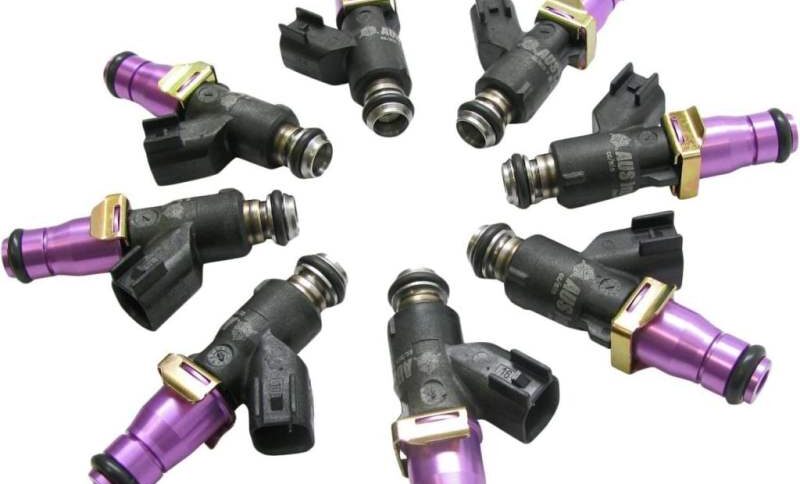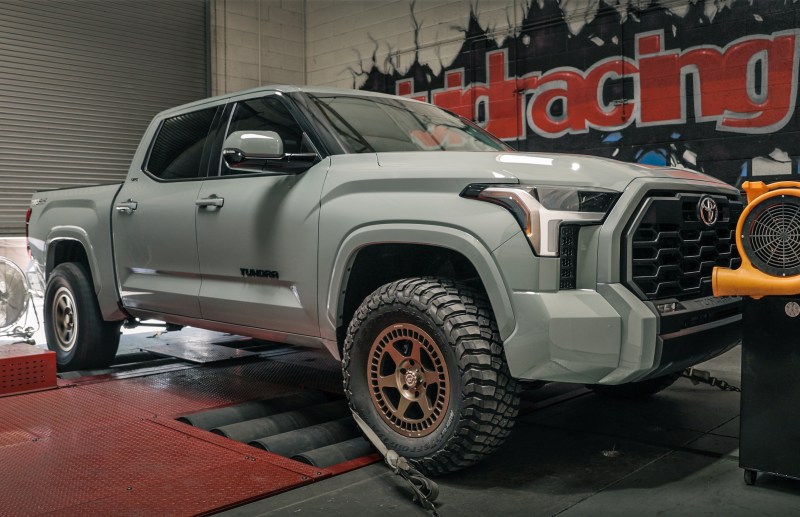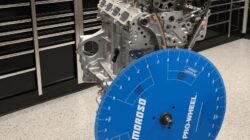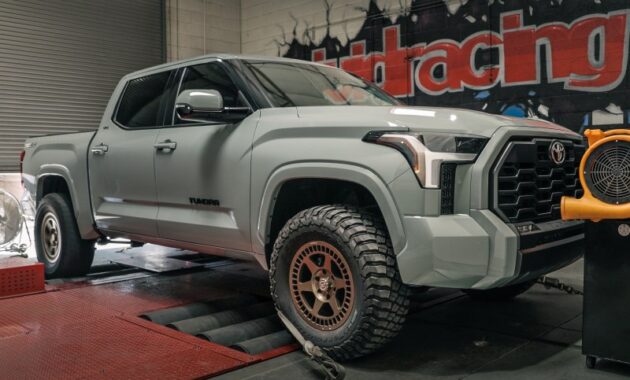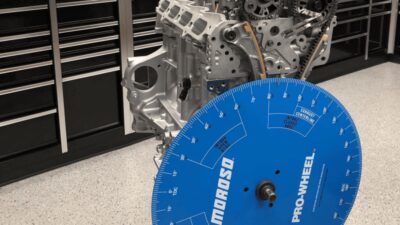Best Ford engineers Upgrades – Ford engineers recognized they had something remarkable with the Barra engine even before it was unveiled. Engineer Gordon Barfield gave the Barra the nickname Project Galeb, and it quickly became apparent that this vehicle would revolutionize the game. Ford’s Australian inline-six engine is highly desirable since it can be tuned to produce about 650 horsepower without requiring a complete engine rebuild. Even though the Barra engine is capable out of the box, there are a few important things to think about before making your first set of bolt-on modifications.
Table of Contents
ToggleEssential Best Ford engineers Upgrades
Certain changes ought to be made first, according to Zane Heath of Maxx Performance in Melbourne. “The oil pump gears, valve springs, and head bolts are mostly the must-do modifications,” Zane suggests. Nevertheless, he also makes the seemingly illogical suggestion to begin with the gasoline system. “The factory underfuelled the Barra. I usually advise beginning with Walbro 460 fuel pump and 1000cc injectors right immediately.”

Ford sold the XR6 Turbo in two separate versions: the Territory Turbo and FG X models had a black engine cover, while the BA to FG vehicles had a red one. The FPV versions with the highest performance had blue covers, while the LPG engines could be identified by their green tops.
Zane would much rather have surge tanks installed close to the front of the vehicle than beside the gasoline tank at the back. Because most street applications don’t require upgraded gasoline lines, this configuration saves time and money. “By placing the surge tank under the intake manifold, the factory 8mm fuel line can handle a significant amount of power,” he says. “Once you start upgrading the pumps and the rear end, you’ll need to upgrade the entire fuel line to the front of the car to get past 650 horsepower.”
Another crucial factor to take into account is gasoline, particularly for those who want to run a naturally aspirated engine on unleaded. “If you’re running a gasoline or NA engine, you’re limited by the fuel because of the ratios,” Zane explains. “Running E85 makes it easier, but if you’re making 400 rear-wheel horsepower on 98-octane fuel with a gasoline engine, you’re on borrowed time.”
Turbo and Exhaust Considerations
The Garrett GT3582R turbo was standard on Ford’s BA-BF XR6 Turbo and FG-FG X F6 vehicles. This turbo is highly regarded for its overengineering. With a modified wastegate spring, this turbo, also known as the GT3540, can produce over 600 horsepower and handle more than four times the stock boost level of 5 psi. The smaller GT3576 turbo on the FG models, on the other hand, increased low-end response but constrained top-end output. “To reach 670 horsepower with a FG, you need a bigger turbo,” Zane clarifies. “I typically recommend upgrading to a Garrett GTX3582, which is a direct replacement.”

Ford’s performance was lacking in one area: valve springs. The seat pressure provided by the factory springs is just 50 psi; adding 15 psi of boost reduces that pressure to 35 psi, which is not enough to keep the valves closed at high RPMs. As a result, power is decreased due to boost leaking into the exhaust.
To fully realize the potential of the Barra, upgrading the exhaust is also essential. “In terms of emissions, bigger is better, especially if you’re running 98-octane fuel,” Zane states. The best exhaust system for a rear turbo arrangement running 98 octane fuel is a four-inch system. A four-inch layout will allow the engine to breathe more easily, even though a 3.5-inch system is capable of handling 650 horsepower. It takes a lot of air to move 22 psi of boost, therefore a bigger exhaust will be beneficial.
Advanced Modifications
The Barra engine provides almost limitless options for those who want to push the envelope with bolt-on upgrades. One Mazda MX-5, for instance, had a fairly basic Barra setup consisting of a block, cams, and heads, as well as aftermarket rods and pistons. It was upgraded to a larger 600x300x125mm Proflow intercooler, a four-inch downpipe, larger injectors, and dual Hellcat fuel pumps, and it was recently able to achieve 1013 horsepower at the hubs.
The BF-FG Barra ECUs are extremely competent of managing engines, and they may be set up to save money and time when compared to standalone systems. The earlier BA ECUs are less dependable, though. “The BA ECU is known for having solder joints that crack, leading to issues like cold start problems,” Zane writes. “Many people end up pouring hot water over the ECU just to get their cars to start.”

Zane utilizes plug-and-play Haltech ECUs in his own cars and highly recommends them. “The stock Barra ECU is capable of producing a lot of power, is very user-friendly, and can be easily locked, making it great for engine swaps.”
Zane’s Ideal Setup
When asked about his ideal Barra setup, Zane suggests the following:
- 1650cc injectors
- MAP sensor upgrade
- Bolt-on GTX3584 turbo
- Upgraded valve springs
- Head studs
- Oil pump gears
- Four-inch exhaust
- High-quality intercooler kit
- Intake and surge tank
“With the stock ECU tuned for E85, this setup can achieve low 10-second or high 9-second quarter-mile times with a skilled driver, while still being a fantastic street car.”
Common Issues and Market Trends
Zane highlights that there are very few particular problems that might cause the Barra engine to fail, despite its great capability. “We build two to three Barras a month that make 650 horsepower on stock engines,” according to him. “Most often, improper setup, problems with the fuel system, or overboost cause failures. These engines will create a lot of power and last a long time if you have adequate fuel, boost control, and tuning.”
Barra engines are still a popular platform even though they were taken off the manufacturing line seven years ago. Barra components have been much more in demand over the last two years, according to Jake Cugnetto of VPW. “The Barra platform is now as popular as the LS platform for us, and customer demand has really picked up,” adds Jake. Based on input from customers, VPW has increased the range of Barra products it offers in order to fulfill this need.
The six-speed ZF automatic gearboxes are another one of Zane’s favorites; they work great on street cars and weekend dragsters. “With a standard engine and ZF transmission, my own car completed a quarter-mile in 9.9 seconds. Making ensuring you have a decent radiator and having the transmission adjusted are crucial.”
Spare Parts and Longevity
Concerns over the availability of replacement parts are increasing as the Barra engines get older. “Ford has stopped supplying pre-Mk2 FG parts, so anything before 2013 is no longer available,” Zane says. “No additional heads, pits, or new blocks are present. The major components are gone; only a few haphazard pieces are left.”

The 4.0L engine is beginning to exhibit wear as it ages, and high mileage engines are seeing the emergence of new failure spots. “Balancers are falling apart, and we’re seeing issues with the valvetrain in gas engines,” says Zane. Two cylinders have low compression as a result of the valves sinking into the head due to the heat. A few Barras are even burning valves as a result of heavy mileage and subpar gasoline. Additionally, I’ve started to notice high-mileage engines with spinning bearings this year.”
Dedicated LPG (greentop) engines are still a common option for high-quality lower-end constructions in spite of these difficulties. In contrast to the 8.7-8.8:1 compression ratios seen in BF-FG turbo engines, they have a 10.3:1 compression ratio. But these engines also have problems including smaller piston edges and delaminating lifters.
Overall, the Barra engine is still a strong platform that can produce 209 to 435 horsepower depending on the configuration. It has a common 92.26mm bore, 99.31mm stroke block, and 24-valve alloy heads. With the correct updates, the Barra may still be a powerful powerhouse despite being a more mature platform. Its popularity is growing.

